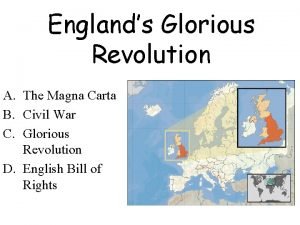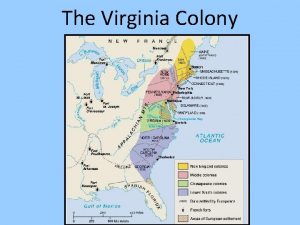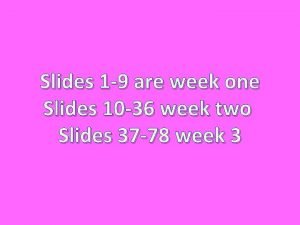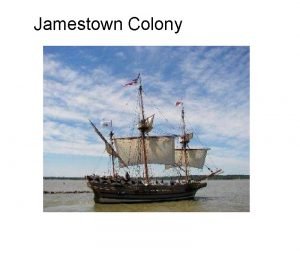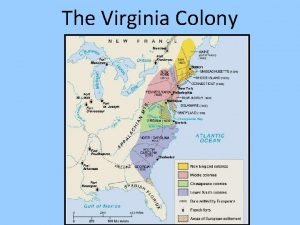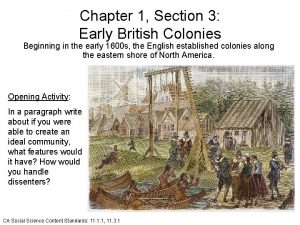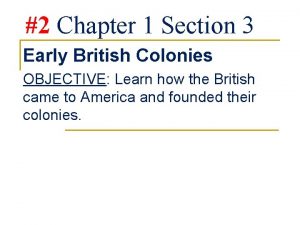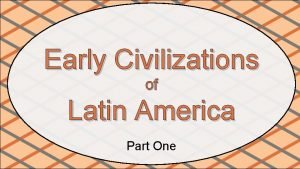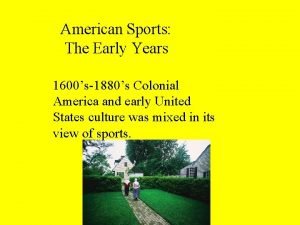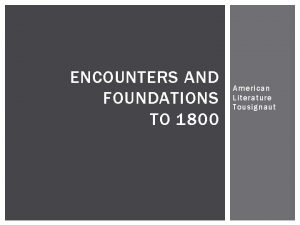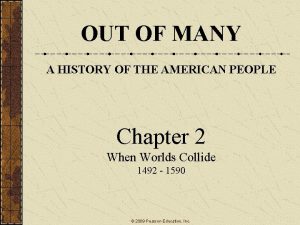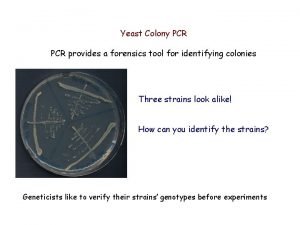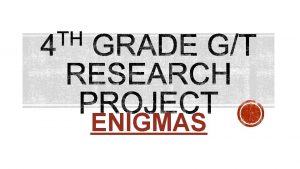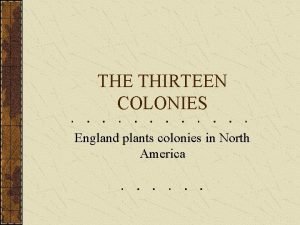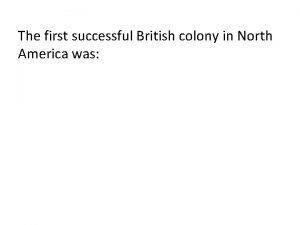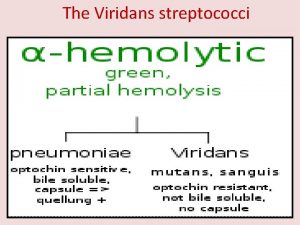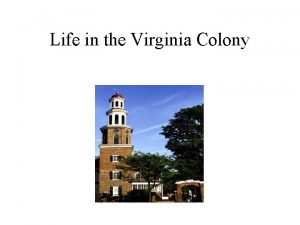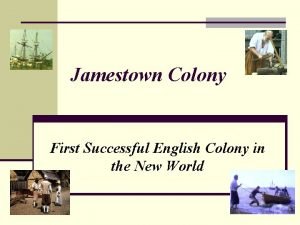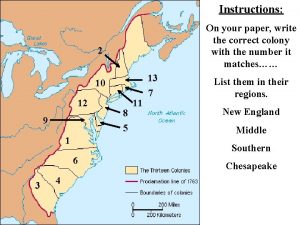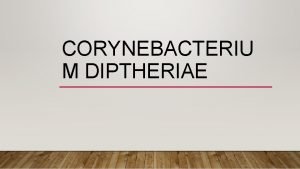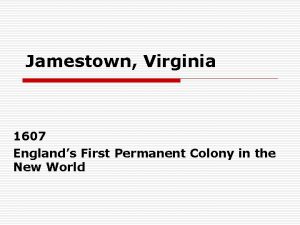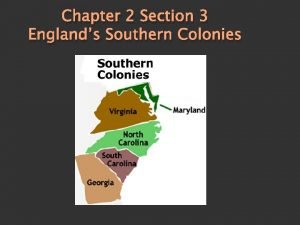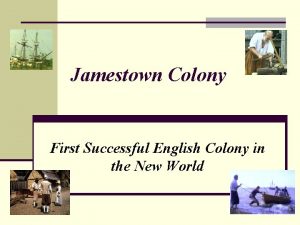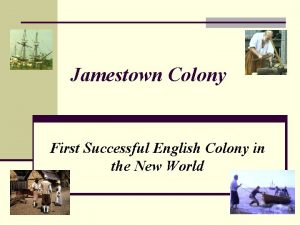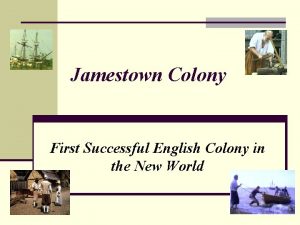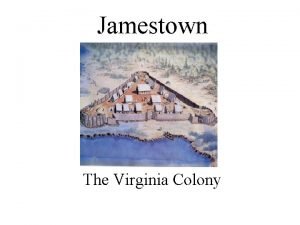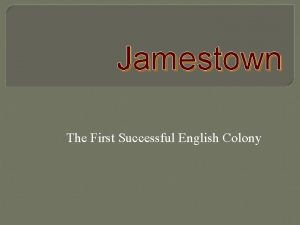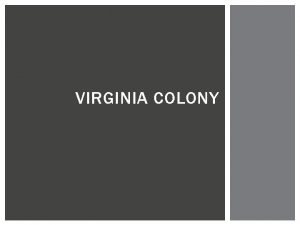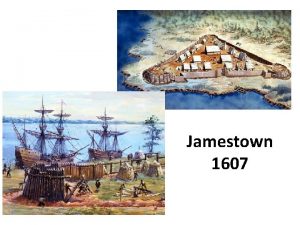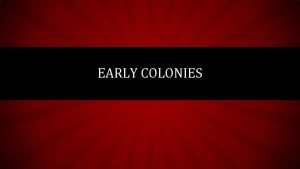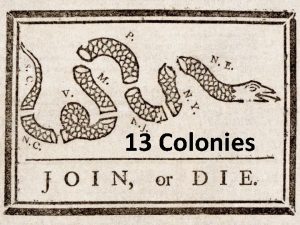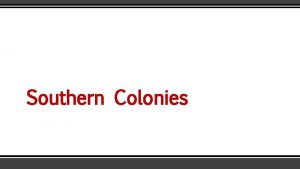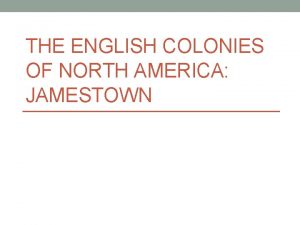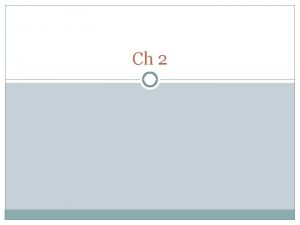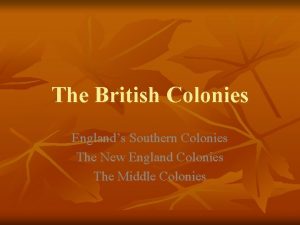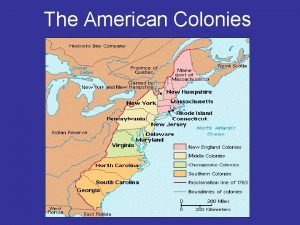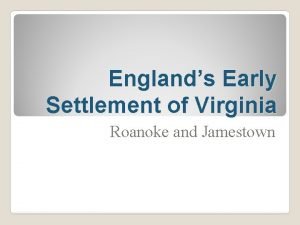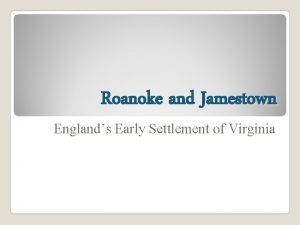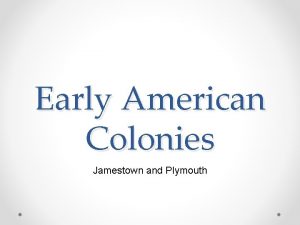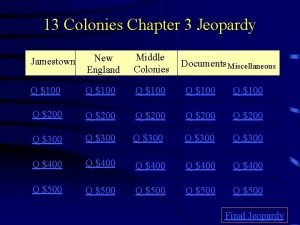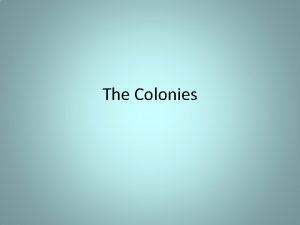Englands Early American Colonies Colony 1 Jamestown Jamestown
































- Slides: 32

England’s Early American Colonies

Colony #1: Jamestown

Jamestown: Who paid for it? • During the 1600 s, many English nobles, farmers, church leaders, and shopkeepers joined together to form joint-stock companies. • A joint-stock company is a business that is owned by many people. The joint-stock company that paid for Jamestown was called the Virginia Company • • Why would people invest their money in a joint-stock company? ? ?

Jamestown: What were they looking for? The Investors: • The Virginia company hoped to find gold, a trade route to Asia, and natural resources they could sell or use in factories. The Settlers: • The settlers hoped to gain land they hoped to “get rich quick. ” • Many settlers (particularly young boys) arrived as apprentices – which are people who learn a specific trade from a skilled worker • Others came over as indentured servants, which are basically temporary slaves/servants.

Jamestown: What happened? • Many of the settlers died at sea on the voyage over. • Once they were in Jamestown, many of the settlers became greedy, and they spent more time looking for gold rather than working…needless to say, the food supply ran low • Settlers resorted to eating snails, dogs, cats, rats, boots and shoes. • Two leaders stepped up and took charge: John Smith and Lord De La Warr. • These men forced the people to farm or be imprisoned or killed. • Things got much better for the colonists

Jamestown: The Outcome • Jamestown continued to prosper. By 1618, the colony stretched for 20 miles. • 100 boys and girls, 90 women, and 20 Africans were added to the population in 1620.

Colony #2: Plymouth

Plymouth: Who paid for it? • The Virginia Company gave the settlers permission to settle just north of Jamestown, however, it could not afford to fund the trip • The settlers formed their own joint-stock company called the Merchant Adventurers to pay for the trip.

Plymouth: What were they looking for? • These settlers were separatists, meaning they wanted to “separate” from the Church of England. • They were looking for religious freedom. • They were pilgrims because they took their journey for religious reasons

Plymouth: the Outcome • The settlers befriended the local Native Americans, who helped them to plant and grow foods. • They were able to communicate to the natives through a Native American named Squanto, who could speak English. • They celebrated the first “thanksgiving” with the natives in the fall of 1621.

Thanksgiving Myths • • • There is not mention of turkey at the first Thanksgiving. The pilgrims did eat boiled pumpkin, cranberries, eels, oysters, and venison (deer). They did not have cows, so there was no milk, butter, or cheese. They had no flour, so their feast did not include bread, pies, or stuffing Corn was boiled and fried to make corn bread. To make sauces for meat, they boiled wild berries sweetened with honey.

Colony #3: Massachusetts Bay

Massachusetts Bay: Who paid for it? • A joint-stock company called the Massachusetts Bay Company funded the trip

Massachusetts Bay: What were they looking for? • Religious freedom. • These people were called puritans because they wanted to change and “purify” the Church of England, not leave it.

Massachusetts Bay: the Outcome • The colonists quickly set planted crops and set up puritan churches. • The population of this colony grew to more than 20, 000 people by 1630.

The Original 13 Colonies

New England Colonies

Massachusetts • The puritans of Massachusetts began to organize cities/towns. • Elders were the leaders of Mass. • These elders decided who could own land; they mostly gave land to Puritan church groups, to ensure that newcomers adhered to Puritan beliefs. • Only Puritan men could vote • These cities/towns were organized around commons, which were fields where townspeople could graze their cows and sheep.

A typical Massachusetts Village

Rhode Island • Formed by settlers who did not agree with the strict Puritan beliefs. • 2 key people: Roger Williams and Anne Hutchinson • Williams was forced to leave Mass. b/c of his beliefs; he formed Providence • Hutchinson was forced to leave, and she started Portsmouth • Collectively, these cities formed Rhode Island, so this colony was started because of religious differences

Connecticut • Founded by Thomas Hooker, who believed that everyone, not just Puritans should, own the land. • Hooker founded the city of Hartford.

New Hampshire • Founded in 1679 by colonists who wanted better farming land to work in fur trades. • Note: Maine and Vermont were both claimed by Massachusetts.

Triangular Trade

The Middle Colonies

New York • Most settlers to New York settled in the southeast, near the Hudson River. • NW New York wasn’t settled very heavily b/c Dutch landowners would not sell their land b/c the Dutch fur traders didn’t want farmers to scare off their game.

New Jersey • New Jersey landowners wanted to make money from the colony, so they attracted many new colonists by offering land at low prices • They also promised religious freedom and the right to govern themselves.

Pennsylvania • Founded by William Penn • Penn was a member of the “Society of Friends” also known as the Quakers. • Quakers had suffered in England b/c of their beliefs. They believed that everyone is equal – men and women, rulers and ordinary people. • Penn founded Philadelphia, and he named the territory Pennsylvania after his father.

The Southern Colonies

Maryland • Began by George Calvert (aka Lord Baltimore) as a refuge for Catholics

North and South Carolina • Given to 8 Lords Proprietors • The colony was once united, but because North Carolina didn’t prosper as quick as South Carolina, they split into two colonies.

Georgia • Founded for 2 reasons: 1. 2. • As a place for those in debt to make a new life for themselves (sort of a penal colony) Keep the Spanish from settling any farther north. First leader was James Oglethorpe

Life in the South • In many northern colonies, people moved from farming to the city. However, in many southern colonies, people tended to stay on farms. • Plantations were common in the south. These were large farms on which crops are grown for sale and on which people who raise crops live. • In the south, land was a little bit better for farming. Specifically, people grew rice, cotton, and tobacco.
 Glorious revolution magna carta
Glorious revolution magna carta Jamestown colony advertisement
Jamestown colony advertisement Who was this
Who was this 1607 king of england
1607 king of england Virginia colony advertisement
Virginia colony advertisement Chapter 1 section 3 early british colonies
Chapter 1 section 3 early british colonies Early british colonies section 3
Early british colonies section 3 North american colonies
North american colonies The american colonies emerge
The american colonies emerge Early cpr and early defibrillation can: *
Early cpr and early defibrillation can: * Inca diorama
Inca diorama Native american literature characteristics
Native american literature characteristics Early american floral design
Early american floral design Cahokia apush definition
Cahokia apush definition Table flower arrangement egypt
Table flower arrangement egypt Colonial america sports
Colonial america sports Greek floral arrangements
Greek floral arrangements French floral design history
French floral design history Themes in american literature
Themes in american literature Early american period floral design
Early american period floral design Foundations and encounters early american literature
Foundations and encounters early american literature Roanoke colony
Roanoke colony Yeast colony pcr
Yeast colony pcr The lost colony of roanoke
The lost colony of roanoke Deleware colony economy
Deleware colony economy The first successful british colony in north america
The first successful british colony in north america Compare and contrast trustee period and royal colony
Compare and contrast trustee period and royal colony Streptococcus pneumoniae csf
Streptococcus pneumoniae csf Virginia colony culture
Virginia colony culture The first successful english colony was
The first successful english colony was Colony
Colony Georgias colony
Georgias colony Poached egg colony of corynebacterium
Poached egg colony of corynebacterium
